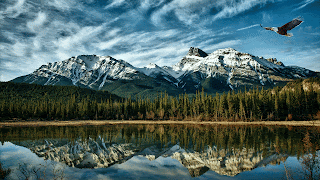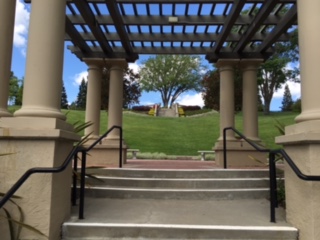Translate
Monday, June 6, 2016
Tuesday, May 31, 2016
Monday, May 23, 2016
Tuesday, May 17, 2016
Wednesday, May 11, 2016
Monday, May 9, 2016
Tuesday, May 3, 2016
Tuesday, April 12, 2016
Monday, April 11, 2016
Weekly Vocabulary 4/11
Cyanotype is a photographic printing process that produces a cyan-blue print. Engineers used the process well into the 20th century as a simple and low-cost process to produce copies of drawings, referred to as blueprints. The process uses two chemicals: ammonium iron(III) citrate and potassium ferrycyanide.
Solarisation (or solarization) is a phenomenon in photography in which the image recorded on a negative or on a photographic print is wholly or partially reversed in tone. Dark areas appear light or light areas appear dark.
In short, the mechanism is due to halogen ions released within the halide grain by exposure diffusing to the grain surface in amounts sufficient to destroy the latent image.
A photogram is a photographic image made without a camera by placing objects directly onto the surface of a light-sensitive material such as photographic paper and then exposing it to light. The usual result is a negative shadow image that shows variations in tone that depends upon the transparency of the objects used. Areas of the paper that have received no light appear white; those exposed through transparent or semi-transparent objects appear grey.
Solarisation (or solarization) is a phenomenon in photography in which the image recorded on a negative or on a photographic print is wholly or partially reversed in tone. Dark areas appear light or light areas appear dark.
In short, the mechanism is due to halogen ions released within the halide grain by exposure diffusing to the grain surface in amounts sufficient to destroy the latent image.
A photogram is a photographic image made without a camera by placing objects directly onto the surface of a light-sensitive material such as photographic paper and then exposing it to light. The usual result is a negative shadow image that shows variations in tone that depends upon the transparency of the objects used. Areas of the paper that have received no light appear white; those exposed through transparent or semi-transparent objects appear grey.
Friday, April 1, 2016
Monday, March 28, 2016
Weekly Vocabulary 3/28
The Graphics Interchange Format (better known by its acronym GIF ) is a bitmap image format that was introduced by CompuServe in 1987and has since come into widespread usage on the World Wide Web due to its wide support and portability.
The zoopraxiscope is an early device for displaying motion pictures. Created by photographic pioneer Eadweard Muybridge in 1879, it may be considered the first movie projector.
The Kinetoscope is an early motion picture exhibition device. The Kinetoscope was designed for films to be viewed by one individual at a time through a peephole viewer window at the top of the device.
Chronophotography is an antique photographic technique from the Victorian era (beginning about 1867–68), which captures movement in several frames of print. These prints can be subsequently arranged either like animation cels or layered in a single frame. It is a predecessor to cinematography and moving film, involving a series of different cameras, originally created and used for the scientific study of movement.
The zoopraxiscope is an early device for displaying motion pictures. Created by photographic pioneer Eadweard Muybridge in 1879, it may be considered the first movie projector.
The Kinetoscope is an early motion picture exhibition device. The Kinetoscope was designed for films to be viewed by one individual at a time through a peephole viewer window at the top of the device.
Chronophotography is an antique photographic technique from the Victorian era (beginning about 1867–68), which captures movement in several frames of print. These prints can be subsequently arranged either like animation cels or layered in a single frame. It is a predecessor to cinematography and moving film, involving a series of different cameras, originally created and used for the scientific study of movement.
Friday, March 25, 2016
Tuesday, March 22, 2016
Monday, March 21, 2016
Thursday, March 3, 2016
Subscribe to:
Comments (Atom)
































































